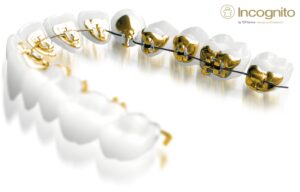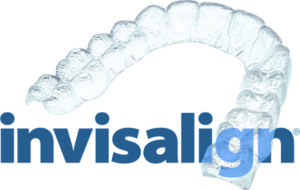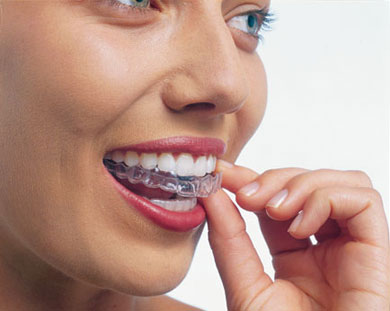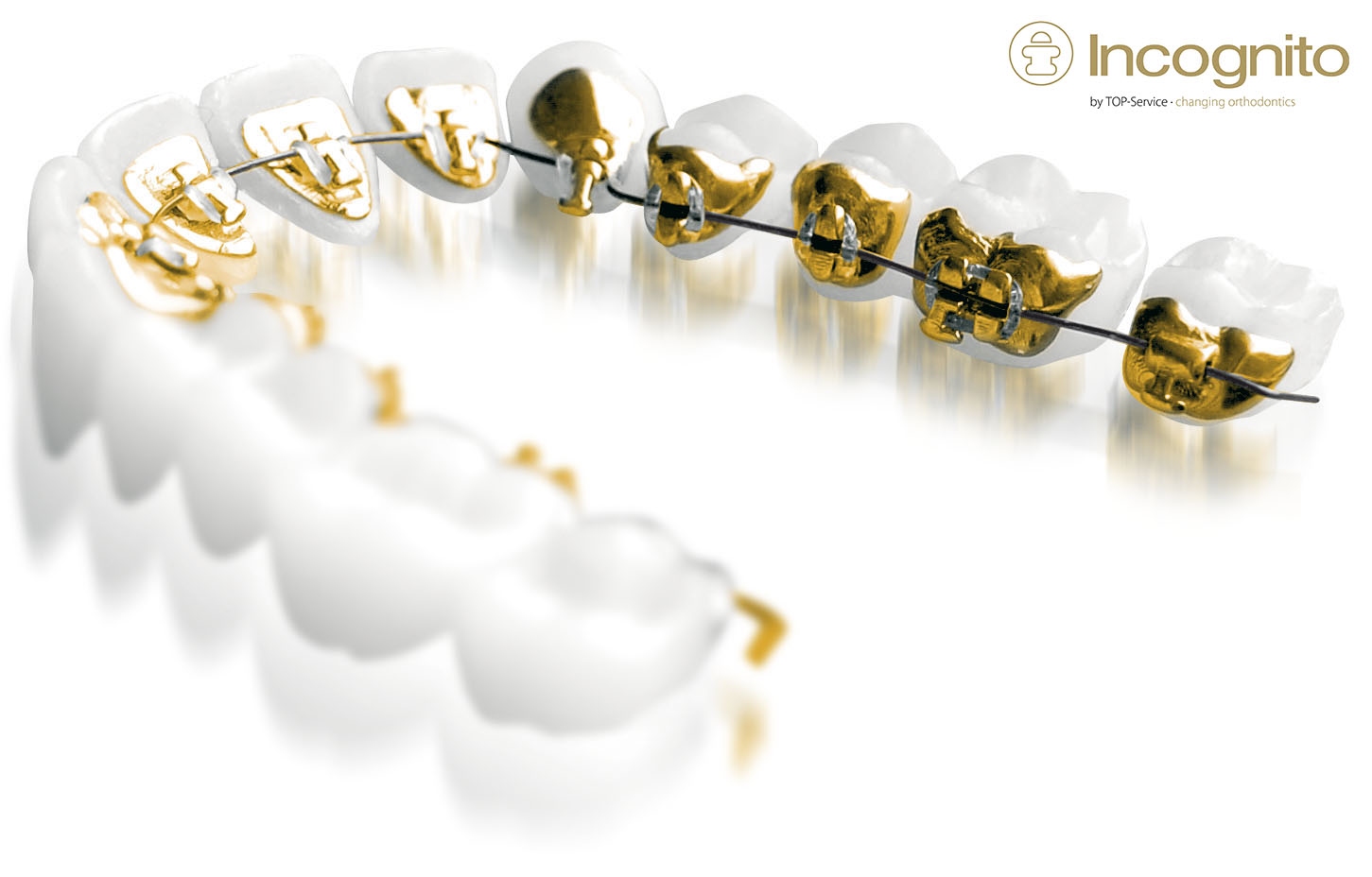Invisible braces fall into two main categories; lingual fixed braces (sometimes called ibraces) such as Incognito, which are fitted behind the teeth and nearly invisible clear plastic aligners with the trademark Invisalign
Neither are totally invisible! Lingual braces are hidden behind the teeth and therefore can only be seen from certain angles while the mouth is wide open. Invisalign aligners are clear plastic that can be seen in certain lights and at particular angles. They also have different functions, so it is only for certain minor conditions that there is a clear choice between the two. Most people looking for “invisible” braces will need the advice of their orthodontist to know which type best fits their needs.

Lingual Invisible Braces
Lingual braces are “real” braces that use fixed brackets and wires to move the teeth. This means your orthodontist has full control over the movement of your teeth and can treat both mild and complex cases with high levels of precision. As your treatment comes to its conclusion, this precision control means small adjustments can be made to get the very best results.
With lingual braces, the entire brace is placed behind your teeth, so from the front, there are no visible wires or brackets. They are so well hidden that some patients are able to complete their treatment without friends, family or colleagues ever being aware of their braces, unless they choose to tell them, of course.
For many patients (and the orthodontists working with them), the fact that lingual braces are fixed to the teeth during treatment is a major advantage. It means there is no risk of losing the braces, and they are constantly working to realign your teeth. Some people who choose Invisalign find the temptation to remove aligners can be too great. This results in failure to wear them for the required amount of time, which in turn impacts on the length of time of treatment as well as the quality of the end result.
There are disadvantages to lingual braces as well. Firstly it can take a little while to adjust to having metal braces in your mouth. Your tongue is highly sensitive, and the braces can cause some initial soreness and discomfort. Some patients also experience a slight lisp when the braces are first fitted. However, most patients adapt very quickly, and your orthodontist can provide advice on how to deal with any specific issues.
Another disadvantage of lingual braces is that it becomes more difficult to keep your teeth clean during treatment. Brackets and wires can provide hiding places for food and plaque. And the very nature of lingual braces means you can’t so easily see the issues! However, by using a dental mirror and spending a little extra time cleaning your teeth, for most people, this is not a major problem. There are also various foods that need to be avoided when wearing braces (see our FAQs for details).

Invisalign Invisible Aligners
The first major advantage of Invisalign is that there’s no metal. Invisalign aligners are produced from medical grade plastic (polyurethane from methylene diphenyl diisocyanate and 1.6-hexanediol to be precise). The transparent material was originally developed for NASA! Some patients will also need Invisalign attachments, small buttons attached to the teeth in order to achieve certain movements. These attachments are colour matched to your teeth and are difficult to see. The aligners are custom designed for your teeth, and as they are flexible, they are far more comfortable than conventional braces.
The second advantage of Invisalign is that the aligners are removable. They are meant to be worn for 20 to 23 hours a day, but they can be removed for eating and cleaning. This means the teeth can be thoroughly cleaned and flossed and that any foods can be eaten (although a lot of the foods that should be avoided for braces should be avoided anyway for other health and dental hygiene reasons).

The disadvantages of Invisalign are first that aligners are only suitable for treating certain relatively minor conditions. More serious conditions do require braces. Also, as already mentioned, because they are removable, some patients do not wear them for long enough each day. They can also be lost!
Overall both Incognito lingual braces and Invisalign Aligners offer discreet treatments particularly suitable for adults. At Moira Wong Orthodontics, our team of highly trained orthodontists can offer advice and guidance on the best treatment for your personal needs.

